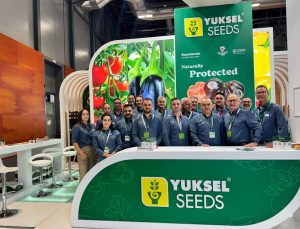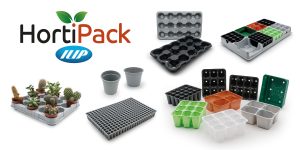You are one of the companies that has most strongly embraced fresh cut fruit in recent years, expanding the category. Could you elaborate on this evolution and why it was undertaken?
We’ve spent years observing how consumer habits are changing, and especially the value that consumers place on convenience without sacrificing quality. That’s why we decided to commit to fresh cut products 11 years ago, aiming to bring fresh, natural, top-quality fruit closer to those who don’t have time to prepare it, but still want to eat healthily.
It hasn’t been an easy journey, but it’s been perfectly aligned with our vision: to make the complex simple without losing essence or flavour.
In these 11 years, our product portfolio under the Frutifresh and Peris brands has grown significantly, with some additions coming from our own market research and others directly requested by clients—because our technology and team make it possible to adapt to the needs of retail buyers.
We’ve also strengthened our operational and logistics structure to meet the growing demand for ready-to-eat fruit, while always upholding the values that define Peris: quality, proximity, and commitment.
Can you tell me about your entire fruit product range?
We specialise in high-quality mono-product lines. We offer sliced piel de sapo melon, seedless watermelon, pineapple in various formats, coconut, pomegranate, pumpkin, carrot sticks, and also mixed offerings like fruit salad or fruit in natural syrup, available year-round. All are ready to eat and aimed at delivering an experience as close as possible to freshly cut fruit at home.
This approach allows us to tailor formats to different consumption occasions—from individual snacks to family trays or foodservice use.
Tell us about your latest packaging innovations developed with a technology centre.
We’ve been working on more sustainable packaging and labelling solutions, using recyclable materials and mono-material options. The goal is to reduce environmental impact without compromising product preservation or presentation. We’re also exploring active packaging systems to extend shelf life and enhance food safety, particularly for more delicate products. This last development is in collaboration with IATA-CSIC.
Thanks to lighter labels and optimised packaging, we’ve already reduced over 2,100 kg of plastic in 2024, and we plan to double that in 2025.
Pumpkin has historically been very important for you in whole produce, and you’ve successfully turned it into a staple in fresh cut and ready-to-eat lines. How has it developed?
Pumpkin is part of Vicente Peris’ DNA. We were pioneers in marketing it as a fresh product, and in recent years we’ve developed it into fresh cut and ready-to-eat formats—peeled, chopped, ready to cook, and oven-roasted, perfect for soups, purées, or prepared meals. It’s highly versatile and perceived by consumers as healthy and easy to integrate into their daily diet.
Its excellent shelf life and flavour make it a strategic product to help us reduce seasonal gaps in our production activity.
Why this commitment to mono-product lines?
We focus on mono-product formats because they allow us to do each reference the best way possible. We carefully select raw materials, tailor the cutting and packaging to each fruit, and ensure consistent quality. This builds consumer trust and brings efficiency to retail. Plus, mono-products are easier to integrate into different uses: as snacks, in salads, in cooking…
It also allows for more precise traceability and tighter control over each batch’s organoleptic properties.
You have a high-tech fresh cut processing facility. Have there been any innovations over the last year, or are there plans for any?
We’re constantly improving. Our facilities are ISO7-certified and feature separate rooms to guarantee the highest hygiene and food safety standards. Over the past year, we’ve enhanced our environmental control system, implemented new sanitisation techniques, and improved internal traceability. We’ve also just begun outsourcing cleanroom sanitation to a specialised provider, which will let us focus even more on production and quality.
RELATED NEWS: The new stars of fresh-cut and ready-to-eat produce
Additionally, our production methods naturally help reduce food waste: we peel and cut with techniques that maximise yield, and many pieces that don’t meet aesthetic standards for whole produce find a home in cut formats thanks to their excellent taste and quality.
We support this strategy by collaborating with universities, technology institutes, and companies that reuse inedible fruit parts—like peels or rinds—for applications in livestock feed, cosmetics, or food processing.

















